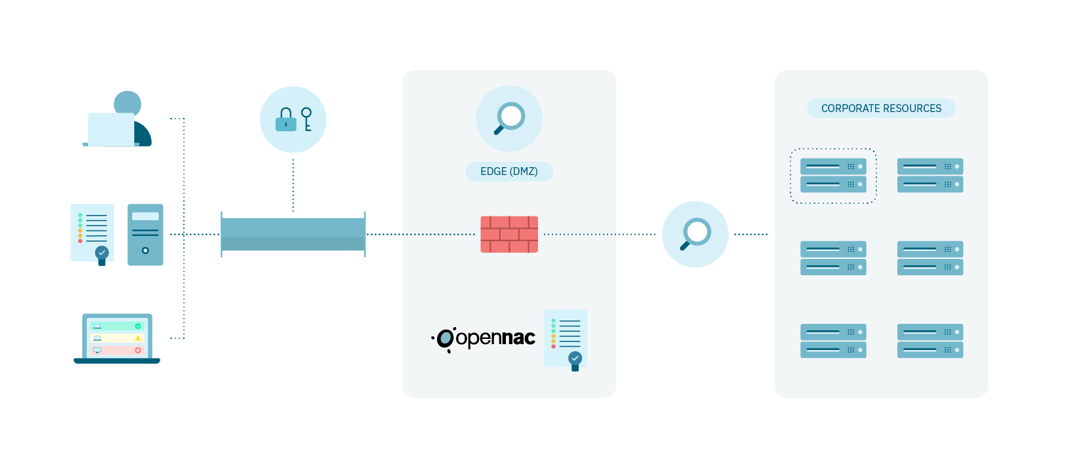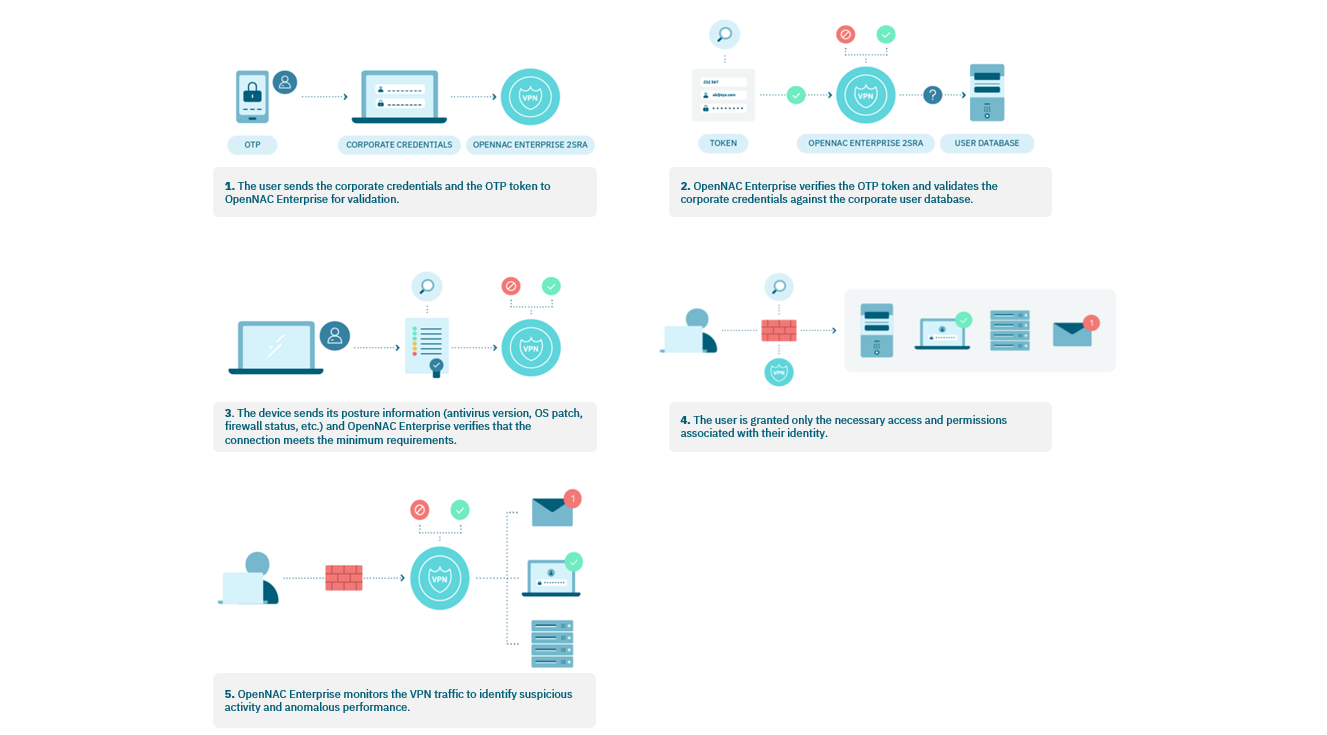4.7.1.1. Introduction
On this page, we will explore the use case of 2SRA. We will explain what 2SRA is and highlight the advantages and value it provides.
4.7.1.1.1. What is 2SRA?

OpenNAC Enterprise is the solution that provides secure access to corporate networks while mitigating the risks of identity theft.
- It allows you to set:
Up to 5 security controls for users who access corporate resources remotely.
- It facilitates the adoption of the following standards and frameworks
ISO2700x
NIST
ENS
etc.
4.7.1.1.2. 2SRA Benefits
Principle of least privilege: Just users have access to the information and resources essential for the performance of their activity.
Zero Trust approach: Establishes a corporate security framework in which only authenticated and authorized users and devices can access corporate information.
Controls for attack surface: Secures remote connection through encryption and user devices.
Mitigate the risk of identity theft: Adds an extra layer of security by applying two-factor authentication (OTP) to reduce the risk of identity theft.
Reduces the risk associated with the user device: Allows the evaluation of device posture, establishing compliance with the minimum connection requirements when accessing the network.
4.7.1.1.3. 2SRA in 5 Steps
The 2SRA configuration and operation process consists of 5 steps:

1 |
The user sends the corporate credentials and the OTP token to OpenNAC Enterprise for validation. |
2 |
OpenNAC Enterprise verifies the OTP token and validates the corporate credentials against the corporate user database. |
3 |
The device sends its posture information (antivirus version, OS patch, firewall status, etc.) and OpenNAC Enterprise verifies that the connection meets the minimum requirements. |
4 |
The user is granted only the necessary access and permissions associated with their identity. |
5 |
OpenNAC Enterprise monitors the VPN traffic to identify suspicious activity and anomalous performance. |